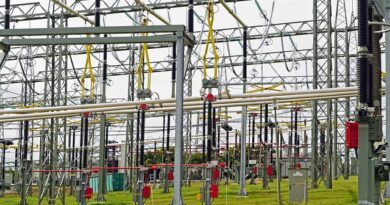Ghaziabad’s Safety Check: Exploring the Importance of Electrical Safety Audits
Introduction
In a world that heavily relies on electricity, ensuring safety in electrical systems is paramount. One of the crucial steps towards maintaining electrical safety is conducting regular safety audits. In Ghaziabad, a city bustling with commercial and residential spaces, electrical safety audits play a vital role in safeguarding lives and properties. This article will delve into the significance of electrical safety audits, their benefits, and how they contribute to a secure environment. Whether you’re a homeowner, a business owner, or an electrical professional, understanding the importance of these audits is essential for creating a safe and secure community.
Table of Contents
- Introduction
- What is an Electrical Safety Audit?
- Understanding the Need for Electrical Safety Audits
- The Benefits of Electrical Safety Audits
- Components of an Electrical Safety Audit
- Conducting an Effective Electrical Safety Audit
- Common Issues Uncovered During Electrical Safety Audits
- Addressing Electrical Safety Concerns
- Importance of Regular Electrical Safety Audits
- Legal and Regulatory Requirements
- Choosing a Qualified Electrical Safety Auditor
- Integration of Technological Advancements in Auditing
- Steps to Prepare for an Electrical Safety Audit
- Ensuring Continuous Electrical Safety
- Conclusion
- FAQs
1. Introduction
Electrical safety is a vital aspect of any community, and Ghaziabad, a city in Uttar Pradesh, India, is no exception. With a growing population and increasing reliance on electrical systems, it becomes imperative to prioritize safety measures. One of the key ways to ensure electrical safety is through comprehensive safety audits.
2. What is an Electrical Safety Audit?
An electrical safety audit is a systematic evaluation of electrical installations, equipment, and procedures to assess their compliance with safety standards and regulations. It involves a detailed inspection, testing, and documentation of electrical systems, identifying potential hazards, and recommending corrective actions. Electrical safety audits provide an objective assessment of the existing electrical infrastructure and help identify areas that require improvement.
3. Understanding the Need for Electrical Safety Audits
Electrical accidents can have severe consequences, ranging from property damage to injuries and even loss of life. Ghaziabad, with its bustling residential and commercial areas, faces inherent risks associated with electrical installations. Conducting regular safety audits helps identify potential hazards, minimize the risk of accidents, and ensure the overall safety of the community.
4. The Benefits of Electrical Safety Audits
4.1. Preventing Accidents: Safety audits enable the identification and mitigation of potential electrical hazards, reducing the risk of accidents such as electrical shocks, fires, and electrocutions. 4.2. Compliance with Standards: By conducting safety audits, individuals and organizations can ensure compliance with relevant electrical safety standards and regulations. 4.3. Enhanced Equipment Performance: Audits identify faulty or outdated equipment, allowing for necessary repairs or replacements, thereby improving overall equipment performance. 4.4. Cost Savings: Proactively addressing electrical safety concerns through audits can prevent costly repairs resulting from accidents or system failures. 4.5. Peace of Mind: Knowing that electrical systems are regularly audited and maintained provides peace of mind to homeowners, business owners, and occupants.
5. Components of an Electrical Safety Audit
A comprehensive electrical safety audit comprises several key components, including:
- Visual inspection of electrical equipment and installations
- Testing of electrical circuits and systems
- Review of electrical documentation and records
- Assessment of protective devices, such as circuit breakers and grounding systems
- Evaluation of maintenance procedures and practices
- Identification of non-compliant or hazardous conditions
- Recommendations for corrective actions
6. Conducting an Effective Electrical Safety Audit
To conduct an effective electrical safety audit, certain steps should be followed:
- Develop a checklist tailored to the specific requirements of the property or facility.
- Assign qualified personnel or engage certified electrical safety auditors.
- Ensure proper documentation of the audit process and findings.
- Conduct thorough inspections, testing, and measurements.
- Review equipment maintenance and record-keeping practices.
- Analyze audit results and provide detailed reports with recommended actions.
- Implement corrective measures promptly and track their completion.
7. Common Issues Uncovered During Electrical Safety Audits
Electrical safety audits often reveal a range of issues, including:
- Improper electrical wiring and connections
- Overloaded circuits or insufficient electrical capacity
- Inadequate grounding or bonding
- Faulty or outdated equipment
- Lack of safety signage and warning labels
- Non-compliance with electrical codes and regulations
- Inadequate maintenance procedures and records
8. Addressing Electrical Safety Concerns
Once electrical safety concerns are identified during an audit, prompt action is essential. Some common measures to address these concerns include:
- Upgrading or replacing outdated or faulty electrical equipment.
- Improving grounding and bonding systems.
- Ensuring proper insulation and protection of electrical wiring.
- Implementing regular maintenance and testing schedules.
- Providing appropriate safety training to personnel.
- Enhancing emergency response plans for electrical incidents.
9. Importance of Regular Electrical Safety Audits
Regular electrical safety audits are crucial to ensure ongoing compliance with safety standards and regulations. By conducting audits at scheduled intervals, potential hazards can be identified and addressed proactively, reducing the likelihood of accidents and ensuring continuous electrical safety.
10. Legal and Regulatory Requirements
Electrical safety audits are often mandated by regulatory bodies and authorities. Compliance with local, national, and international electrical codes is essential for maintaining safety and avoiding penalties or legal issues. Adhering to these requirements safeguards both individuals and organizations and contributes to the overall well-being of the community.
11. Choosing a Qualified Electrical Safety Auditor
Selecting a qualified electrical safety auditor is vital to ensure reliable and accurate audits. Consider the following factors when choosing an auditor:
- Relevant certifications and qualifications
- Experience in conducting electrical safety audits
- Knowledge of local electrical codes and regulations
- Track record and reputation in the industry
- Ability to provide detailed reports and recommendations
12. Integration of Technological Advancements in Auditing
Technology plays a significant role in enhancing the effectiveness and efficiency of electrical safety audits. Advancements such as infrared thermography, digital testing equipment, and automated data analysis streamline the audit process, enabling auditors to identify potential issues more accurately and efficiently.
13. Steps to Prepare for an Electrical Safety Audit
Preparing for an electrical safety audit involves several essential steps:
- Review existing electrical documentation and records.
- Identify potential hazards and address them before the audit.
- Ensure accessibility to electrical panels, equipment, and documentation.
- Schedule the audit at a convenient time for all stakeholders.
- Communicate the importance of the audit to employees or occupants.
- Make necessary arrangements for equipment testing and measurements.
14. Ensuring Continuous Electrical Safety
Electrical safety is an ongoing process that requires consistent attention and effort. Beyond conducting regular audits, it is crucial to establish preventive maintenance programs, provide training to employees, and encourage a culture of safety within the community. By embracing these practices, Ghaziabad can maintain continuous electrical safety and create a secure environment for all.
15. Conclusion
Electrical safety audits are a fundamental part of maintaining a secure and thriving community in Ghaziabad and ensuring the well-being of its residents. By conducting regular electrical safety audits, potential hazards and risks can be identified, addressed, and prevented, minimizing the occurrence of accidents, electrical failures, and other detrimental events.
Electrical safety audits encompass a comprehensive evaluation of electrical systems, installations, and equipment. Through visual inspections, testing, and meticulous documentation, auditors assess the compliance of electrical systems with safety standards and regulations. This process allows for the identification of non-compliant or hazardous conditions, as well as the recommendation of corrective actions to mitigate risks and ensure compliance.




